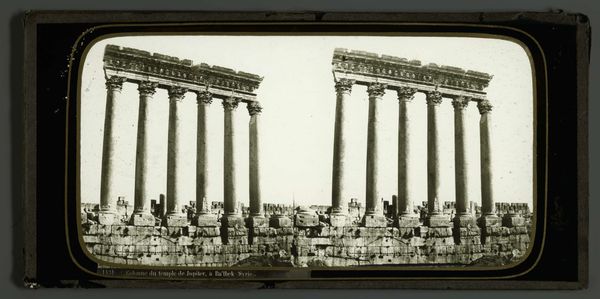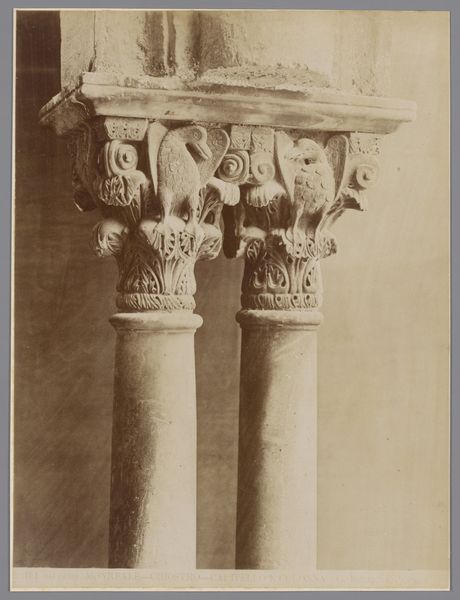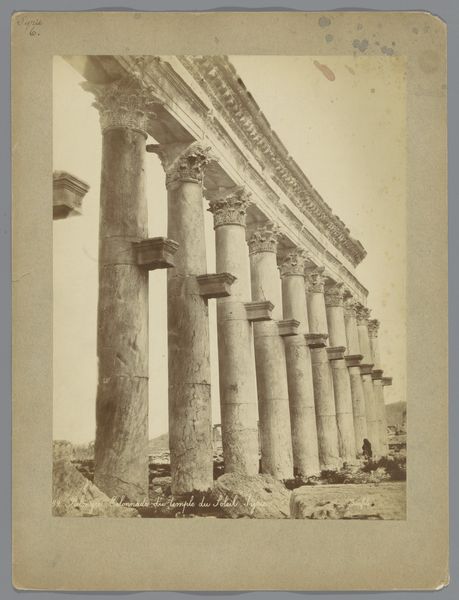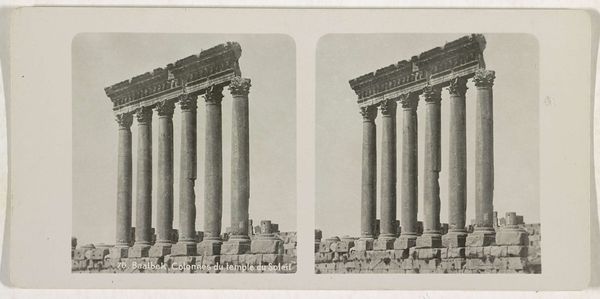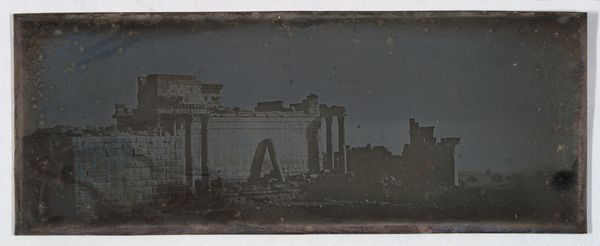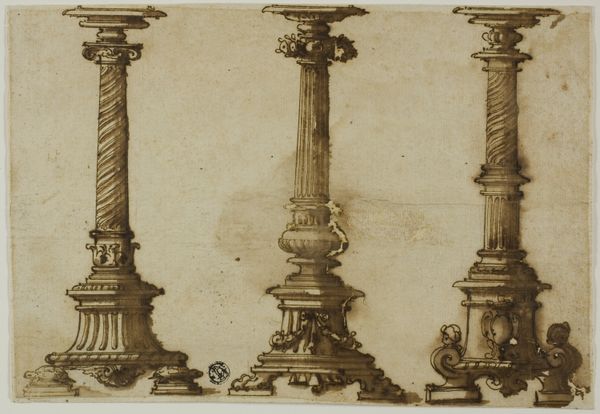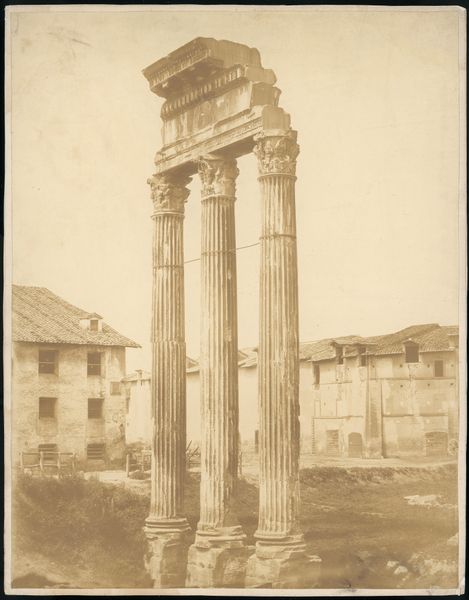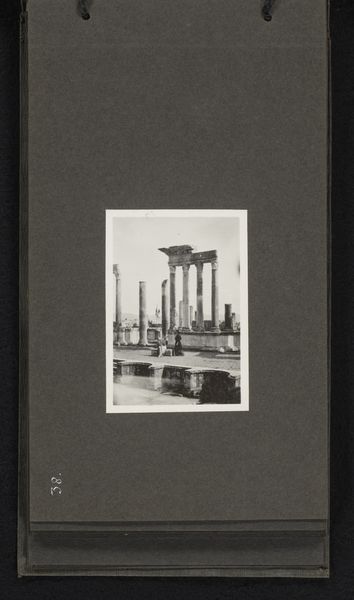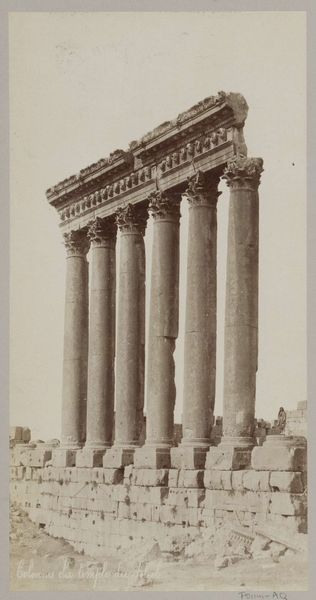
Northwest Facade, Temple of Castor and Pollux, Rome (12. Rome. 1842. Graecostasis. faç. N.O.) 1842
0:00
0:00
daguerreotype, photography, architecture
#
landscape
#
daguerreotype
#
classical-realism
#
photography
#
geometric
#
ancient-mediterranean
#
watercolour illustration
#
architecture
Dimensions: Image: 9 7/16 × 3 11/16 in. (24 × 9.4 cm)
Copyright: Public Domain
This is Joseph-Philibert Girault de Prangey’s daguerreotype, "Northwest Facade, Temple of Castor and Pollux, Rome," made in 1842. De Prangey was part of a vanguard of 19th-century artists who embraced photography not just as a tool for documentation, but as a means of engaging with the past and constructing new narratives around identity and place. In this early photograph, the monumental architecture speaks to the grandeur of Roman civilization, yet the pioneering photographic technique introduces a modern sensibility, challenging traditional representations of history. The temple, dedicated to mythical twins, can be viewed through an intersectional lens: it raises questions about masculinity, divinity, and power. Consider how this artwork invites us to negotiate our relationship with history. De Prangey’s image also captures a sense of time and decay, inviting reflection on the transience of human achievements. Through his lens, we are encouraged to reflect on the interplay between personal experience and collective memory.
Comments
No comments
Be the first to comment and join the conversation on the ultimate creative platform.

